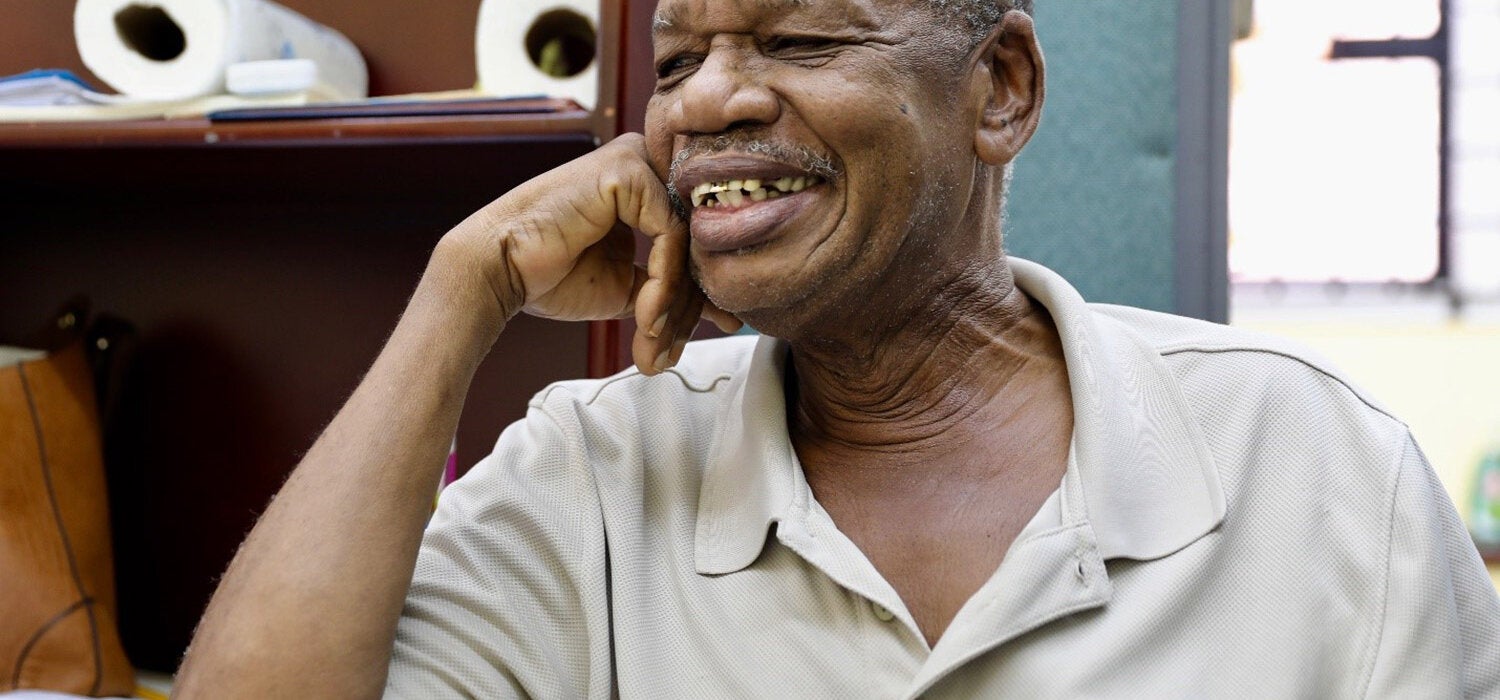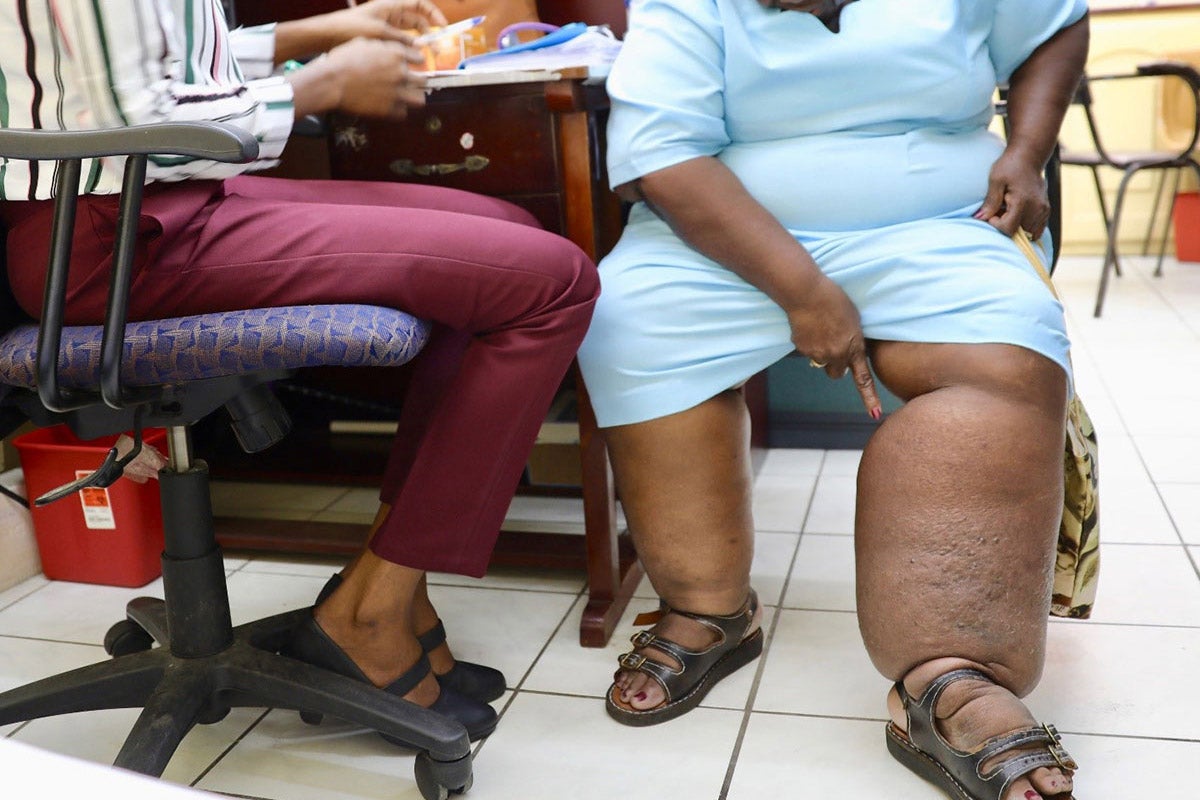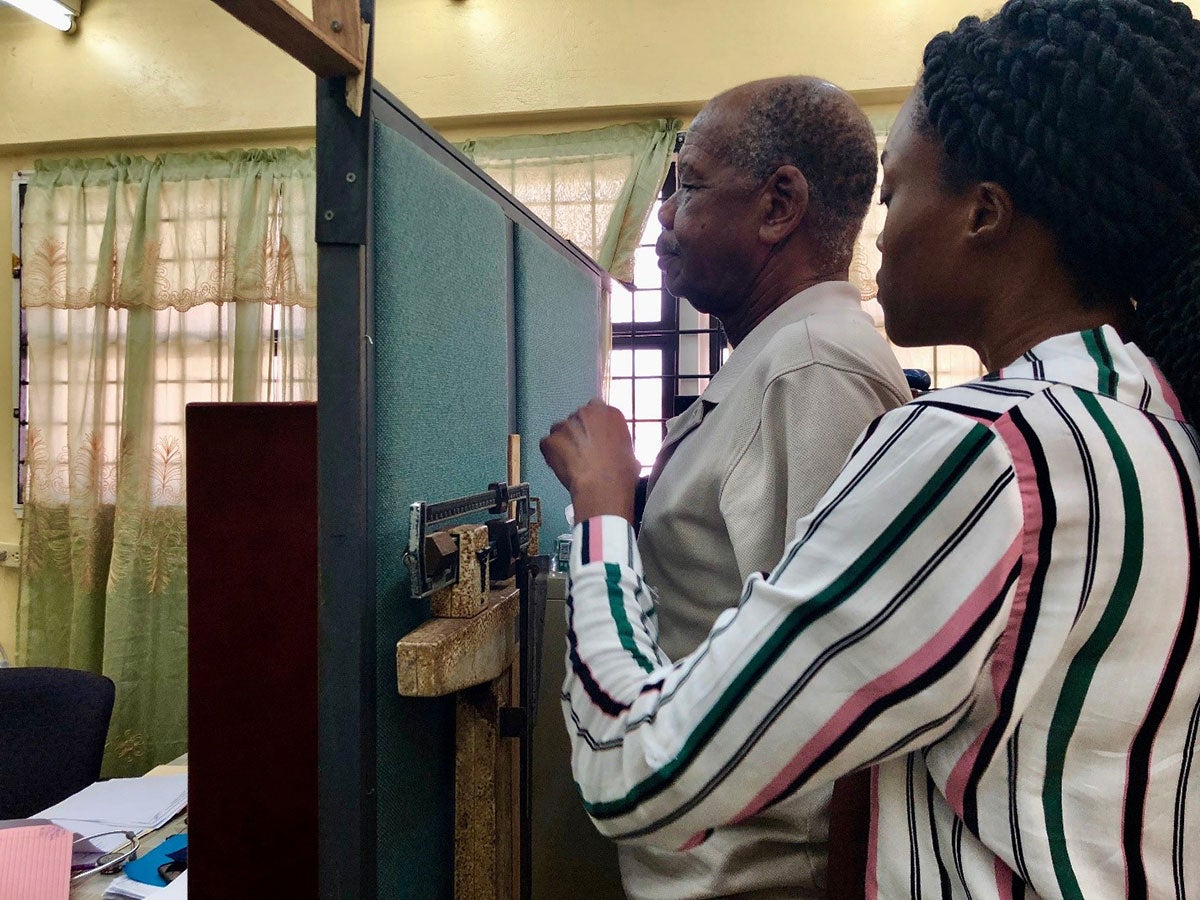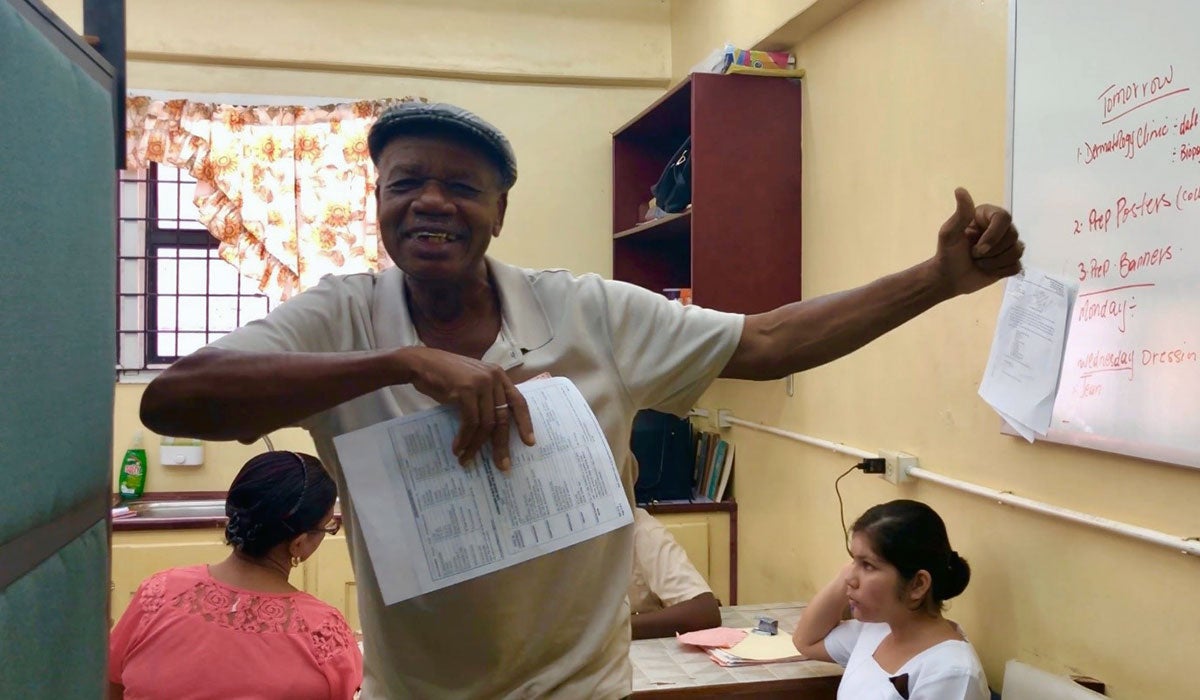"I’ve been in love with dancing since I was small. Dance is an important part of my exercise and involves a lot of heavy training. This is why I’m so fit at the age of 72."
Rodwell Monty-Gaskin
Seventy-two-year-old Monty-Gaskin is a qualified dance referee in Guyana and has been a patient at Georgetown Hospital’s Lymphatic Filariasis clinic for just a couple of years. He was referred by the hospital’s Accident and Emergency department after presenting with pain in his foot and was later diagnosed with Lymphatic Filariasis, commonly known as Filaria.

Lymphatic Filariasis is a mosquito-borne, parasitic disease, which threatens the health of around 500,000 people in Guyana.
While it is not fatal, it affects the lymphatic system, leading to a variety of permanent, debilitating symptoms including severe swelling of the genitals (hydrocele) and lower extremities (elephantitis, or “big foot” as it is more commonly known in the country).
Guyana, with technical assistance from the Pan American Health Organization (PAHO), and the United States Centers for Disease Control (CDC), and funding from USAID and the End Fund, has committed to achieving elimination by 2024.
When Monty-Gaskin arrived at the clinic, his main symptom was a pronounced swelling of his left foot which left him unable to wear a dancing shoe and, more importantly, incapable of continuing his career as a dancer. “Dance is an important part of my exercise and involves a lot of heavy training,” he said. “This is why I’m so fit at the age of 72.”
Fortunately, Monty-Gaskin sought help early and the physician in charge of the clinic, Dr. Annastacia Sampson, was able to bring the swelling in his foot under control.
The Georgetown Hospital’s lymphatic filariasis clinic offers a variety of free treatments, such as pharmaceutical therapy to tackle the underlying parasites that cause the disease, and the monitoring of any flare-ups including additional swelling and sores that can appear on the affected limb. According to Dr. Sampson, however, there is a limit as to what can be done, as the elephantitis itself is incurable and the damage caused by filaria, permanent.
“This is why it is so important that we focus on prevention so that filaria doesn’t progress to the stages where people start having manifestations of the disease, like the patients in this clinic,” said Dr. Sampson.
In order to ensure elimination by 2024, the country has carried out a remapping survey in 2018-2019 to determine which areas are endemic. Following this survey, a mass drug administration (MDA) of antiparasitic medicines will be carried out at schools, workplaces and other areas where people congregate, to ensure that those at risk of filaria throughout the country are given preventative treatment.

One of the main issues for those suffering with lymphatic filariasis, is the challenge they face going about their daily lives, particularly when the elephantitis becomes very obvious. “When I found out that I had filaria and my foot was swollen, my fear was that if my pants lifted up when I danced, my friends would see it and be gone,” said Monty-Gaskin.
This fear of discrimination is certainly not uncommon among the patients at the clinic, who often find the stigma overwhelming.
For Norma King, another patient at the clinic, this discrimination is a daily occurrence. “When people see the leg “you are no longer Norma, or whoever you are. You’re “big foot lady” or “big foot woman,” she said. “You have some neighbors that as soon as you put your face to the door say “Oh, you big foot so-and-so,” and that is how you face life every day. I wouldn’t want to see a dog go through this,” she added.
The patients at the clinic all agree that future generations of Guyanese must be urgently protected from lymphatic filariasis, via the MDA program, before it causes the permanent issues that they have to deal with on a daily basis.
“When they used to give out the tablets, I would just disregard them. I didn’t know the importance until I got this foot,” said Monty-Gaskin. “Now, I sit down with my son in quiet moments and I tell him how important it is.”
“At a macro level, elimination would mean that we’re taking care of our people,” assured Dr. Gordon-Campbell, Deputy Chief Medical Officer at the Ministry of Public Health in Guyana. “But I don’t think we could ever fully comprehend what it would mean for the individuals that will not be affected, who will not have to carry around the weight of their limbs, who will not suffer stigma. It is difficult to measure the effect of prevention.”
Monty-Gaskin is one of the lucky few whose filaria was caught early enough to treat. He is, therefore, more aware than most of the importance of the elimination campaign and on educating younger generations on how to avoid lymphatic filariasis.
“Since getting my shoe back on, I am able to dance. I’m always telling my friends to give me a call,” he chuckled as he stepped out of the consultation room and danced out the door of the clinic.
On 1 October 2019, the countries of the Americas agreed to a collective approach to the elimination of communicable diseases throughout Latin America and the Caribbean. The Elimination Initiative identifies a wide range of diseases and related conditions, including lymphatic filariasis, as potential candidates for elimination in the Region, and enables countries to consolidate efforts and resources towards ending these diseases and ensuring public health.





